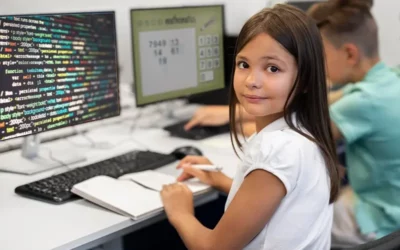In a world fueled by technological advancements, nurturing young minds with the essence of Kid-friendly robotics education has become more vital than ever. As we stand at the threshold of innovation, empowering children with the knowledge and skills to understand, create, and interact with robots not only kindles their curiosity but also shapes them into proactive contributors to the future.
Through Kid-friendly robotics education, youngsters embark on a journey that fosters critical thinking, problem-solving, and creativity, igniting a passion that transcends circuits and wires. Join me in unraveling the captivating realm of why robotics education holds the key to unlocking our children’s potential in this dynamic era.
Table of contents
Benefits of Robotics Education for Children
In an era where technology shapes the world around us, nurturing the inquisitive minds of our young ones has never been more crucial. One avenue that has emerged as a captivating and transformative learning experience is Kid-friendly robotics education. Let’s delve into the profound advantages it offers to our budding prodigies.
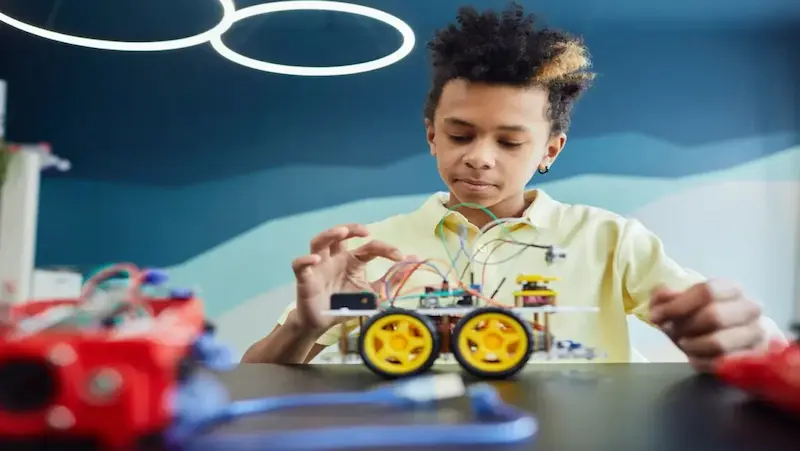
Enhancing Problem-Solving Skills
In the realm of robotics for kids, challenges are not mere obstacles; they are invitations to innovate. As children tinker with sensors, wires, and motors, they encounter real-world problems that beg for clever solutions. With each intricate connection and recalibration, they learn to dissect challenges, analyze intricacies, and craft innovative pathways.
Stimulating Creativity and Imagination
In the heart of robotics lies a captivating fusion of art and science, where creativity flourishes alongside logic. Children, like modern-day Da Vincis, craft imaginative mechanisms that dance to their whims. They envision robots that traverse alien terrains, lend a hand in mundane chores, or even paint the next masterpiece.
Improving Logical Thinking and Programming Skills
The labyrinthine world of coding and programming becomes a captivating playground through Kid-friendly robotics education. As children meticulously string lines of code, they witness the transformative power of logic at play. Algorithms transform into actions, patterns morph into precision, and commands breathe life into metal and circuits.
Fostering Teamwork and Collaboration
As robotic marvels take shape, so does a sense of camaraderie among young minds. Collaborative projects weave a tapestry of shared ideas, challenges, and triumphs. Children learn to communicate visions, delegate tasks, and synchronize efforts to achieve a common goal.
Getting Started with Kid-Friendly Robotics
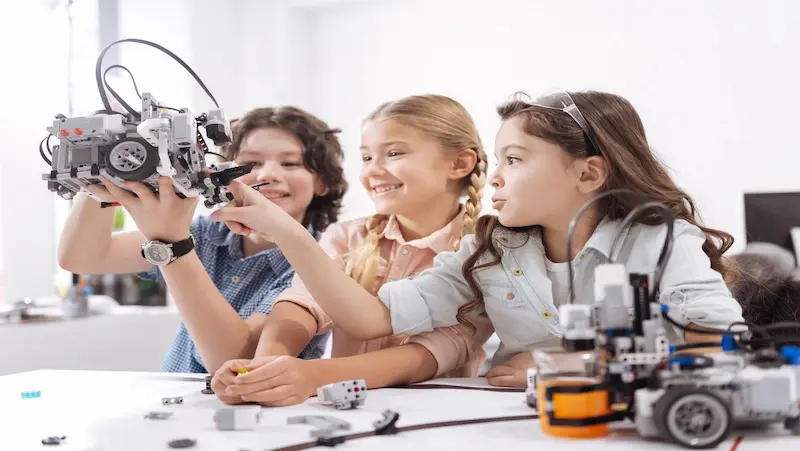
Choosing the Right Robotics Kits for Kids
Imagine the delight in your child’s eyes as they assemble their very own robot! Begin by selecting a robotics kit tailored to your child’s age and interests. Kits often come with various components and clear instructions to help them construct and bring their robotic friend to life.
Setting Up Robotics Learning Spaces
Creating an inviting learning environment is key to nurturing your child’s fascination with Kid-friendly robotics education. Dedicate a corner of your home where your child can tinker, experiment, and create. Arrange the space with the robotics kit, tools, and materials they might need.
Safety Measures and Guidelines
Safety first! Best robotics for kids are not only about fun and learning; it’s also about responsibility. Teach your child to handle tools and components safely. Supervision is crucial, especially during hands-on activities involving small parts. Consider wearing safety goggles and gloves to demonstrate the importance of protecting oneself.
Fun and Educational Robotics Projects
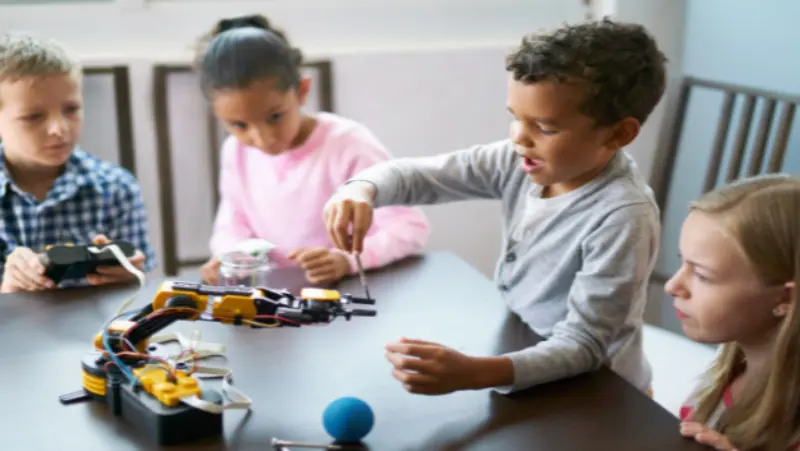
Designing and Racing Robot Vehicles
Imagine engineering your own speed demon, a compact marvel that zips and zooms with your ingenuity as its driving force. Designing and racing robot vehicles isn’t just a matter of assembling parts; it’s an exercise in problem-solving, physics, and design aesthetics.
Creating Robot Art and Drawings
Who said robots can’t be artists? Unleash your inner creative genius by programming a robot to wield a paintbrush or pencil. This fascinating fusion of technology and art teaches you about precision, programming logic, and even color theory.
Building Robots for Environmental Exploration
Embarking on an eco-friendly adventure, building robots for environmental exploration lets you be a technological trailblazer. Picture a rugged rover traversing challenging terrains or an aquatic explorer delving into the mysteries of underwater ecosystems.
Robotics and STEAM Education

Integrating Robotics into STEAM Curriculum:
Imagine a classroom where students transform from passive listeners to active creators. By incorporating robotics, educators can turn this vision into reality. Robotics engages students on multiple levels, encouraging them to explore complex concepts through hands-on experiences. As students design, build, and program robots, they naturally delve into scientific principles, mathematical calculations, engineering problem-solving, and even artistic creativity.
Robotics in Schools and After-School Programs:
The impact of robotics extends beyond the confines of traditional classroom hours. Many schools and after-school programs are recognizing the potential of robotics to bridge the gap between theory and application. These extracurricular avenues provide students with the freedom to experiment, fail, and iterate – vital components of the learning process. Robotics clubs and workshops cultivate a passion for learning, enabling students to explore their interests while developing a range of practical skills.
Overcoming Challenges in Robotics Education

Addressing Gender Stereotypes in Robotics
Robots, with their wires and circuits, have no gender. Yet, societal norms have inadvertently woven a fabric of stereotypes that discourage girls from engaging in Kid-friendly robotics education. The image of a “boys-only” pursuit still lingers, but educators are rewriting this narrative. By fostering environments where all students can explore their curiosity, irrespective of gender, we’re shattering these preconceived notions.
Encouraging Inclusivity and Diversity in Robotics Classes
The hum of motors and the dance of algorithms know no boundaries. Robotics, at its core, welcomes everyone willing to embrace its wonder. Recognizing this, educators are tirelessly working to make robotics classes for kids a tapestry of backgrounds, cultures, and perspectives. Inclusive environments not only enrich the learning experience but mirror the collaborative nature of the field.
Parental and Educator Involvement in Robotics Learning
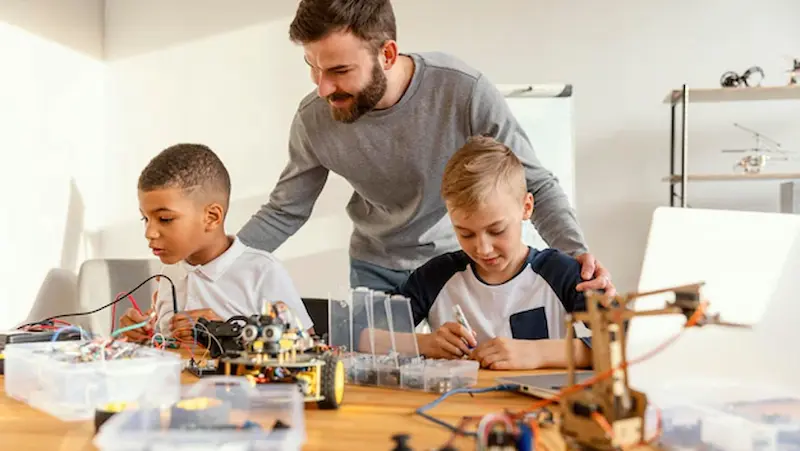
Supporting Children’s Interest in Robotics at Home
In the cozy corners of our homes, a spark of interest can ignite a passion that lasts a lifetime. Parents, as the first guides in a child’s learning journey, have a unique opportunity to fuel their curiosity for robotics. Simple steps like encouraging hands-on experimentation with robotics kits for kids, sharing engaging stories of technological marvels, or even exploring virtual simulations can fan the flames of interest.
Collaboration between Parents, Teachers, and Robotics Instructors
The magic of online robotics for kids education truly unfolds when parents, teachers, and robotics instructors come together as a unified team. As a child steps into the classroom, the seamless collaboration between these pillars of support can create an environment where learning thrives. Regular conversations between parents and educators can provide valuable insights into a child’s evolving interests and needs.
Conclusion
In nurturing young minds through robotics class for kids education, we embark on a journey of discovery and empowerment. Through the intricate dance of creativity and logic, students not only grasp the mechanics of machines but also unlock the boundless realms of imagination.
As they tinker, design, and collaborate, they cultivate not just technical prowess, but also critical thinking, problem-solving, and teamwork – skills that illuminate the path to a promising future. The hum of motors and the glow of screens become conduits of inspiration, shaping curious learners into confident creators. With robotics as their guide, these young minds step confidently into a world where innovation knows no bounds.
Join the revolution in education with Brightchamps. Our courses in robotics, coding, and financial literacy empower kids to become confident and capable learners.
Frequently Asked Questions
A1. There’s no fixed age – it varies with interest. Generally, around 8-10 years is a good start, but older kids can dive in too.
A2. Not necessarily. Basic programming concepts might help, but many beginner kits introduce coding step by step.
A3. Encourage curiosity, provide hands-on kits, explore together, and celebrate small successes.
A4. Kid-friendly kits prioritize safety. Still, supervision, following instructions, and proper tool use are important.
A5. Building a line-following robot, designing a remote-controlled rover, or creating a simple automated home task robot.

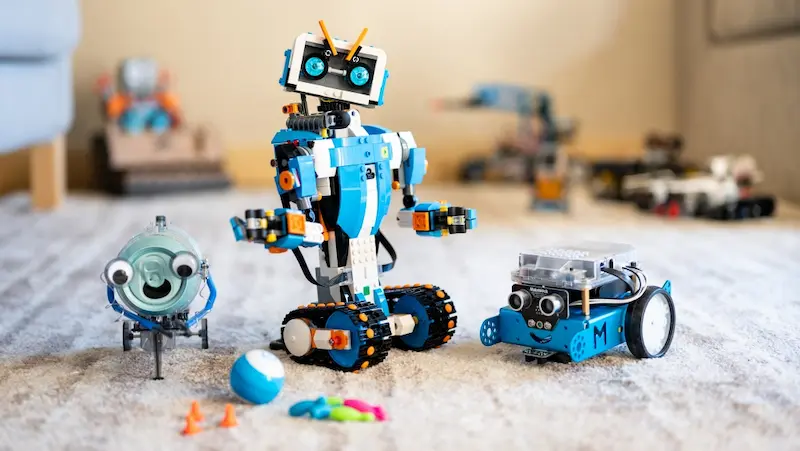
 We are an army of educators and passionate learners from BrightChamps family, committed to providing free learning resources to kids, parents & students.
We are an army of educators and passionate learners from BrightChamps family, committed to providing free learning resources to kids, parents & students.












